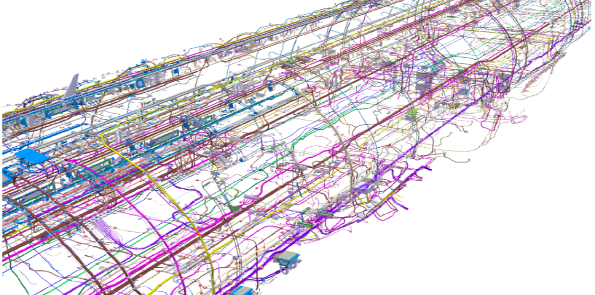Power cable insulation performance
The so-called insulation is the use of non-conductive material will be charged or wrapped up to protect the electric shock from a security measure. Good insulation to ensure the safe operation of electrical equipment and lines to prevent the occurrence of personal electric shock accident is the most basic and most reliable means.
Power cable insulation can usually be divided into three categories: gas insulation, liquid insulation and solid insulation. In practical applications, solid insulation is still the most widely used, and the most reliable of an insulating material.
There is a strong electric effect, the insulation material may be broken and lose its insulation performance. In the above three kinds of insulation material, the gas insulation material is broken, once the external factors (strong electric field) can be removed after its own to restore its inherent electrical insulation properties; and solid insulation material is breakdown, the irreversible completely lost Its electrical insulation performance. Therefore, the electrical circuit and equipment insulation must match the voltage level, but also with the use of the environment and operating conditions to adapt to ensure the safety of insulation.
In addition, due to corrosive gases, vapors, moisture, conductive dust and mechanical operation and other reasons, may make insulation materials to reduce or even damage. Moreover, the long-term effects of environmental factors such as sunlight, wind and rain, and the aging of insulating materials can gradually lose their insulation properties.
In summary, the main indicators affecting the performance of insulating materials are:
1. Insulation resistance, resistivity: resistance is the reciprocal of the conductance, the resistivity is the resistance per unit volume. The smaller the conductivity of the material, the greater the resistance, the reciprocal relationship between the two, for the insulation material, always want the resistivity as high as possible.
2. Relative dielectric constant and dielectric loss tangent: Insulation material uses two: electrical network components of the mutual insulation and capacitor media (energy storage). The former requires a relatively small relative dielectric constant, which requires a relatively large relative dielectric constant, and both require dielectric loss tangent, especially in high frequency and high voltage applications of insulating materials, in order to make dielectric loss is small, are required to use Dielectric loss tangent small insulation material.
3. Breakdown voltage, electrical strength: in a strong electric field under the destruction of insulating materials, loss of insulation into a conductive state, known as the breakdown. The breakdown voltage is called the breakdown voltage (dielectric strength). Electrical strength is the breakdown of the voltage between the voltage and the two electrodes that withstand the external voltage under the specified conditions, that is, the breakdown voltage per unit thickness. For insulating materials, the general breakdown voltage, electrical strength of the value of the higher the better.
4. Tensile strength: The tensile strength of the specimen under tensile test. It is the most widely used and tested test of the mechanical properties of insulating materials.
5. Flammability: refers to the insulation material in contact with the flame to resist combustion or leave the flame to prevent the ability to continue burning. With the increasing use of insulating materials, its flammability requirements are more important, people through various means to improve and improve the flame resistance of insulating materials. The higher the flame resistance, the better the safety.
6. Resistance to arc: Under the specified test conditions, the insulating material is resistant to the arc acting along its surface. Test the use of high voltage AC current, by high pressure between the two electrodes generated by the arc, so that the surface of the insulating material to form the conductive layer of the time required to determine the arc resistance of insulating materials. The greater the time value, the better the arc resistance.
The above is a brief description of the power cable insulation performance, learn more about the power cable content, please pay attention to kingsignal official website






